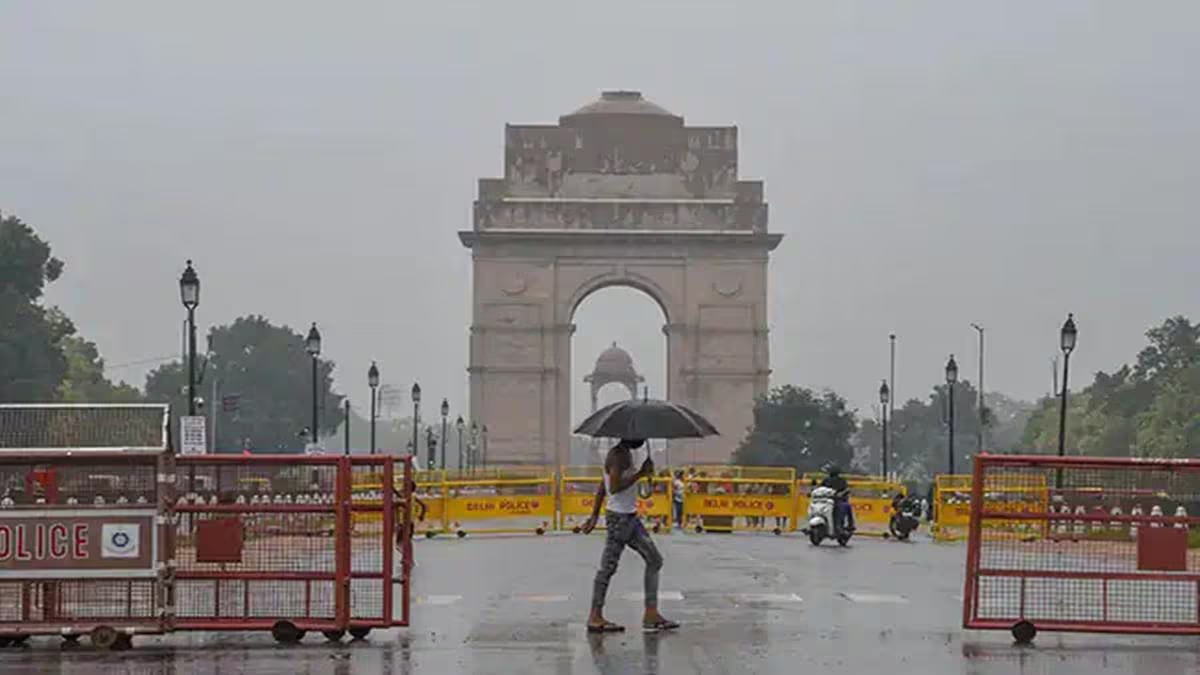One of the most vital elements of India’s monsoon system, the trough line, has now shifted northward. This change signals a potential shift in rainfall distribution across northern and central India. Meteorologists predict an increase in rainfall in these areas in the coming week, which could mean monsoon rains may soon grace Delhi as well. Last week, Delhi experienced overcast conditions for two consecutive days, yet it did not result in significant rainfall.
According to the weather department, a seasonal trough around 2 km above the national capital, extending east-west, continued directing moist southeastern winds towards the city, maintaining atmospheric moisture and cloudiness. Some areas experienced drizzles, but an anticyclonic ridge prevailing in the middle and upper atmosphere was inhibiting the monsoon’s entry into Delhi. The weather department reports that the trough line has shifted towards northern and central India, weakening the anticyclonic ridge above the region, possibly accelerating the monsoon.
Monsoon Trough: What You Need to Know
Stretching from northwestern India to the Bay of Bengal, the monsoon trough is a low-pressure zone. It aids in keeping moisture intact and propelling the monsoon forward, significantly contributing to rainfall. The monsoon trough line not only encourages cloud formation but also enhances precipitation across regions. This line of low pressure is not stationary; it moves north and south during the monsoon season, affecting the timing and intensity of rainfall nationwide.
Impact of Trough Line Shift on Rainfall
The current northward shift of the monsoon trough line has intensified moisture flow and cyclonic activities, resulting in forecasted heavy rainfall over the next seven days across northwestern, central, eastern, and northeastern India. This increase in rainfall is particularly crucial for agriculture, as much of northern India relies on monsoon rains for farming. States like Punjab, Haryana, Bihar, and Uttar Pradesh are expected to benefit from the increased rainfall. Enhanced soil moisture will facilitate sowing and potentially boost agricultural productivity. However, the possibility of floods and waterlogging poses concerns, especially in low-lying areas with inadequate drainage.
Factors Behind Trough Line Shifts
Several factors contribute to the northward shift of the trough line. A persistent low-pressure area over the Arabian Sea and the trough line over Vidarbha have increased moisture flow, initiated by the beginning of the monsoon. Additionally, broader climate impacts, such as a lack of snow in the Western Himalayan Region, neutral El Niño conditions, and a robust Mascarene High (a high-pressure region situated near the Mascarene Islands in the southern Indian Ocean), have supported the monsoon’s advancement. A low-pressure weather system over the Bay of Bengal attracted moisture and atmospheric energy towards northeastern India, pulling the monsoon trough line northward.




